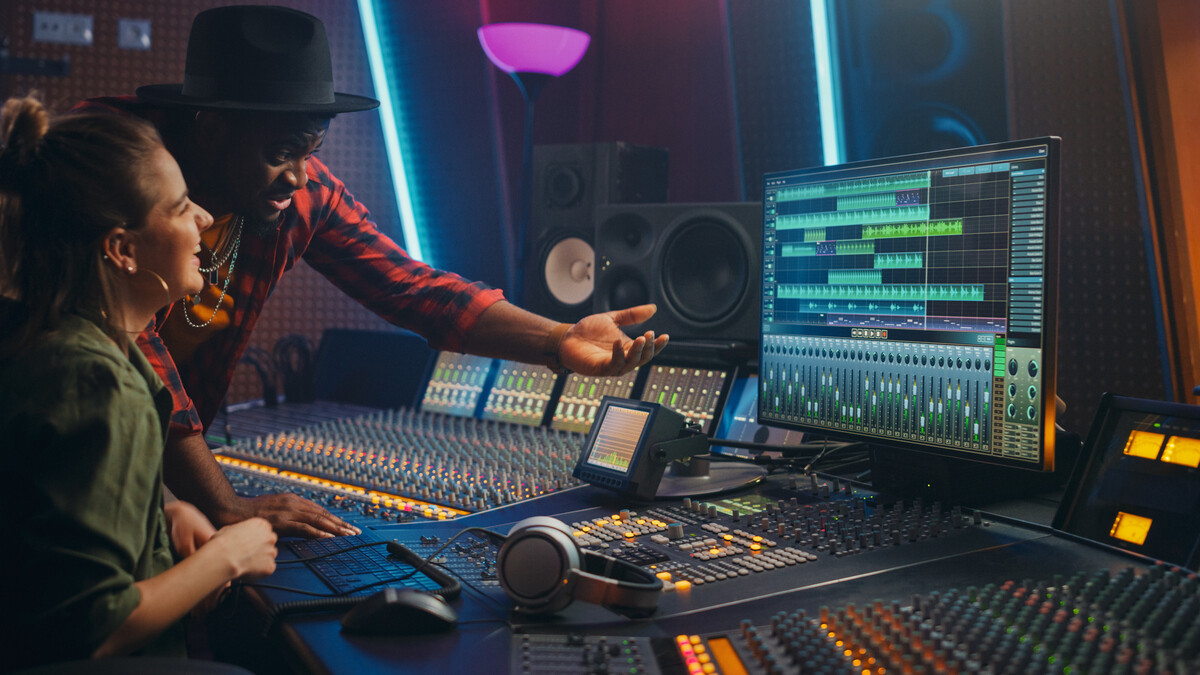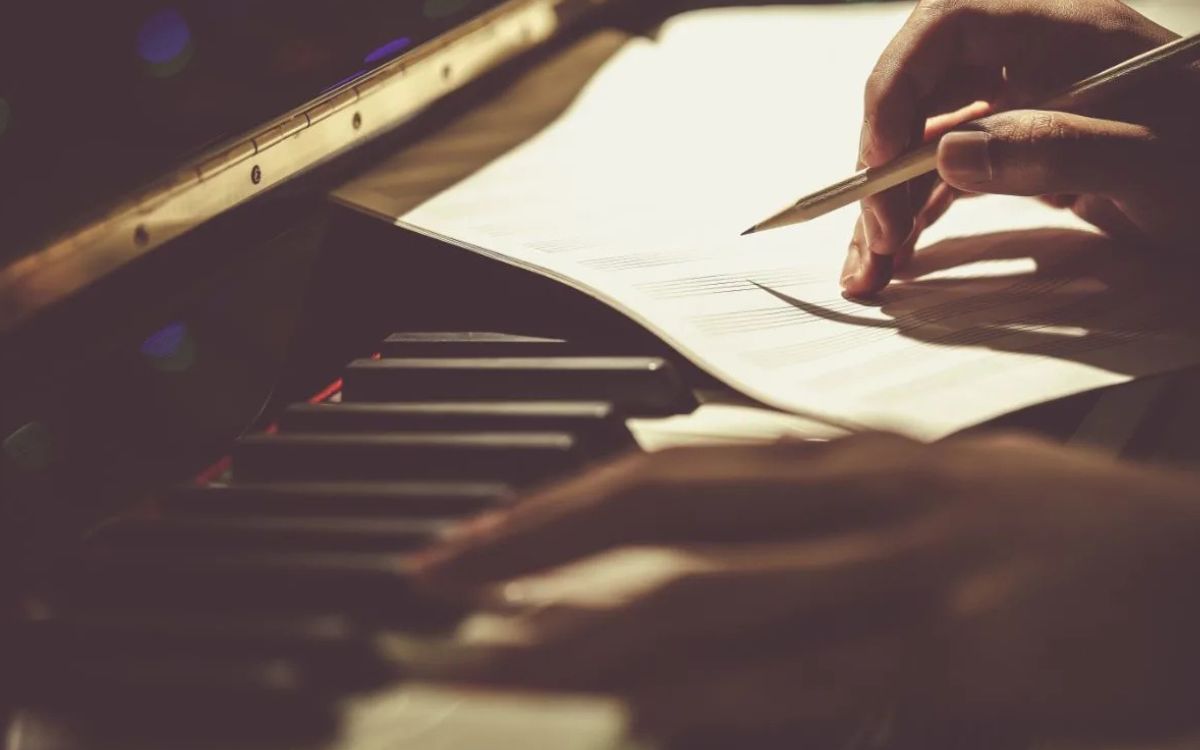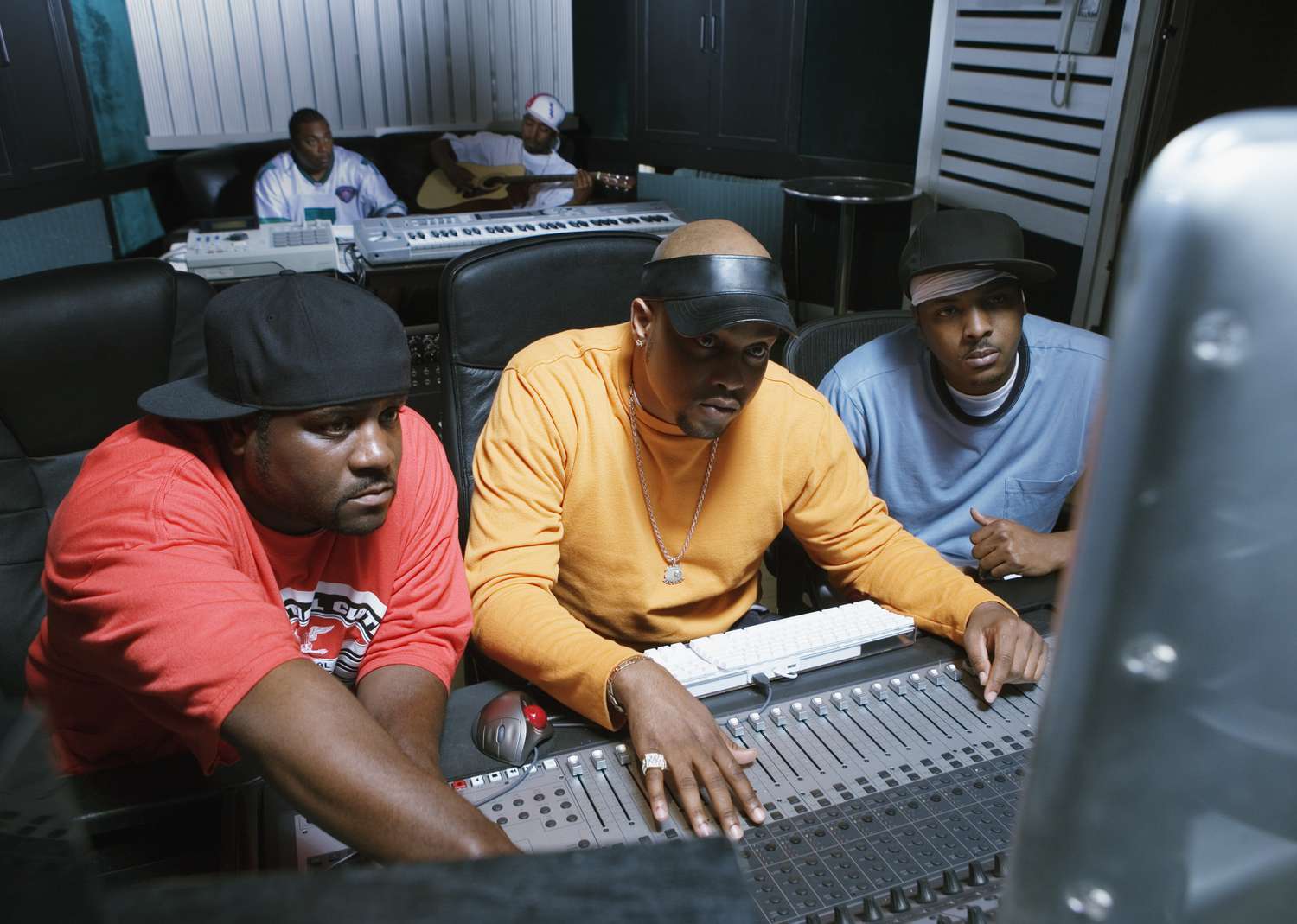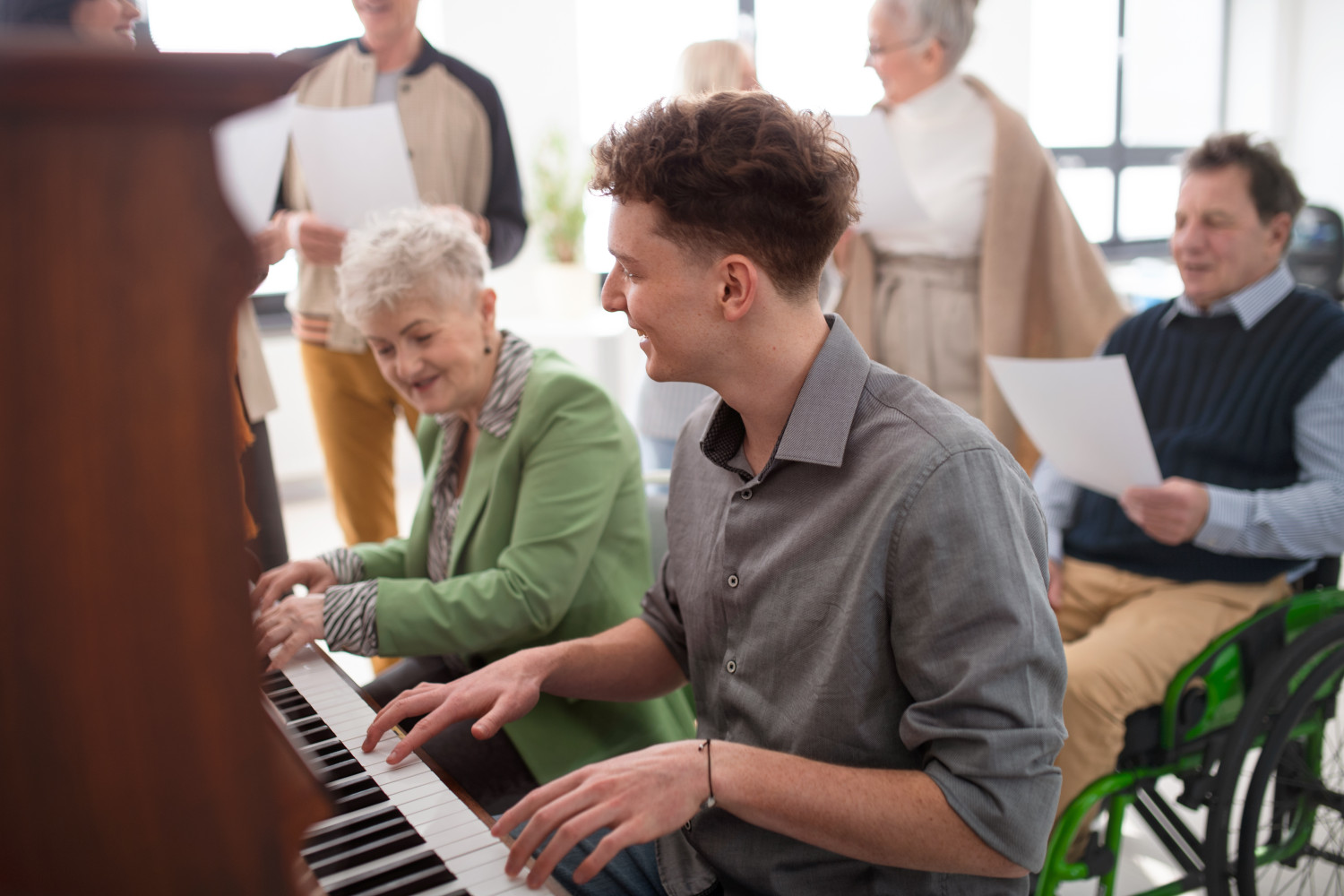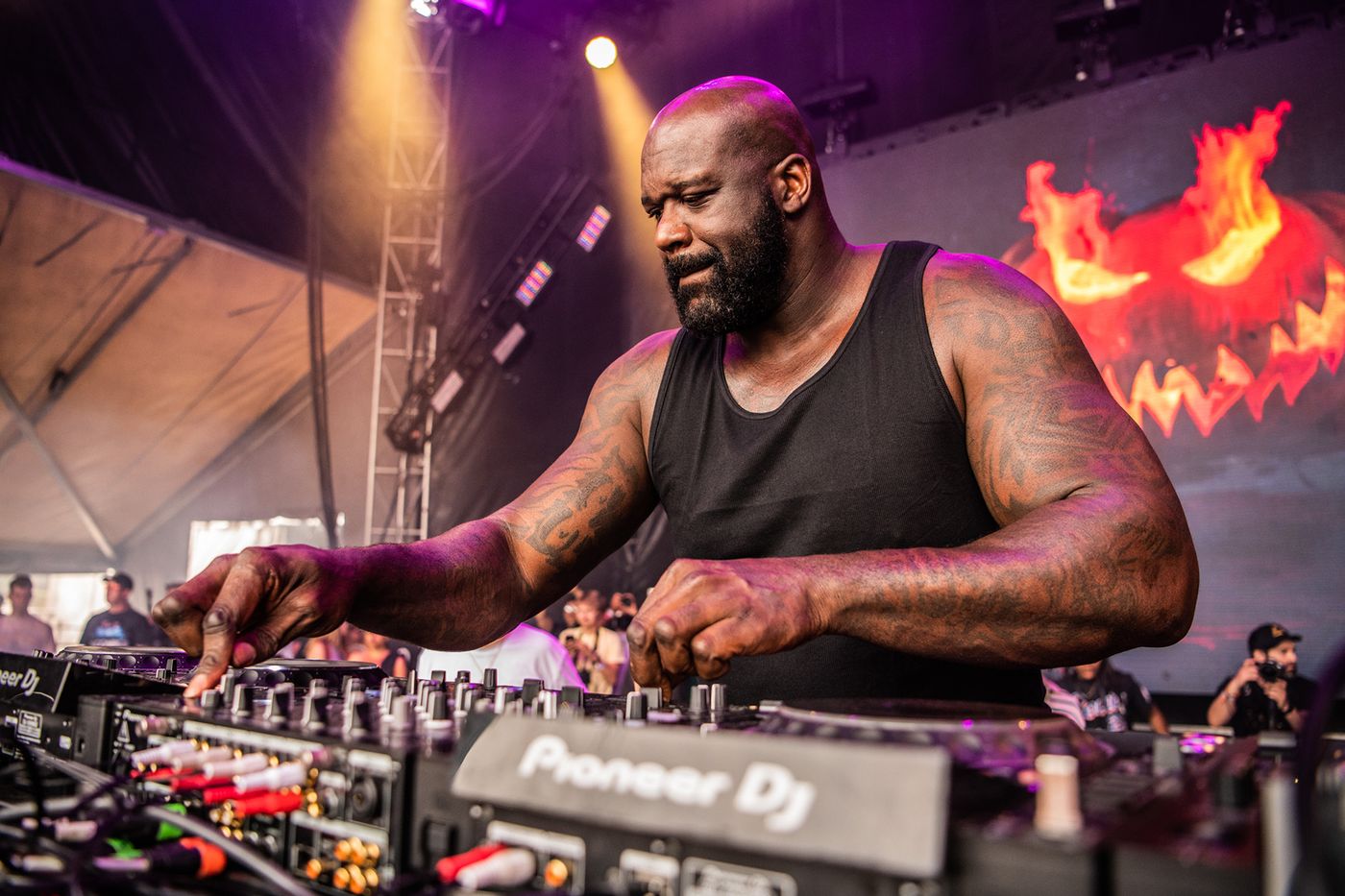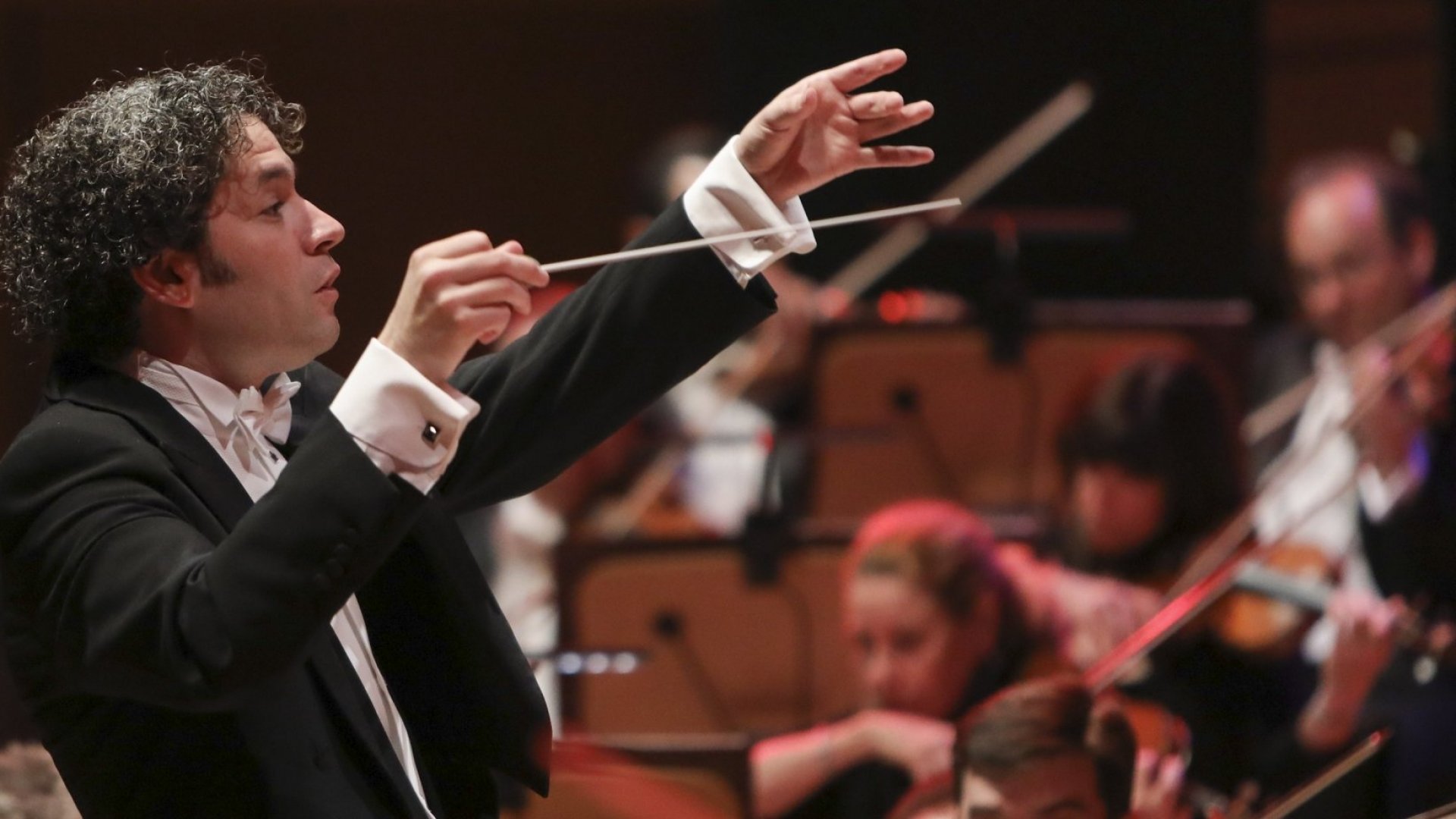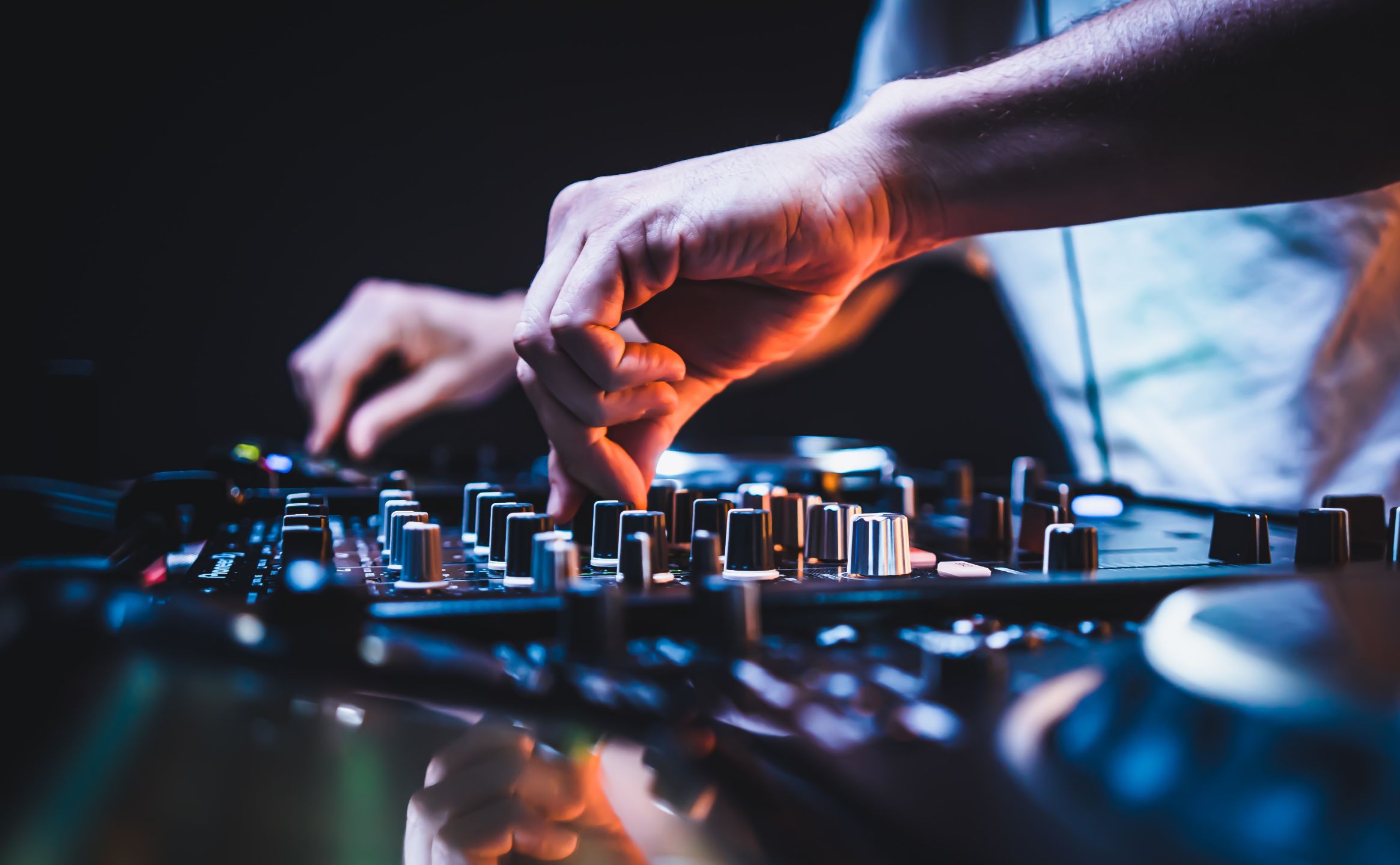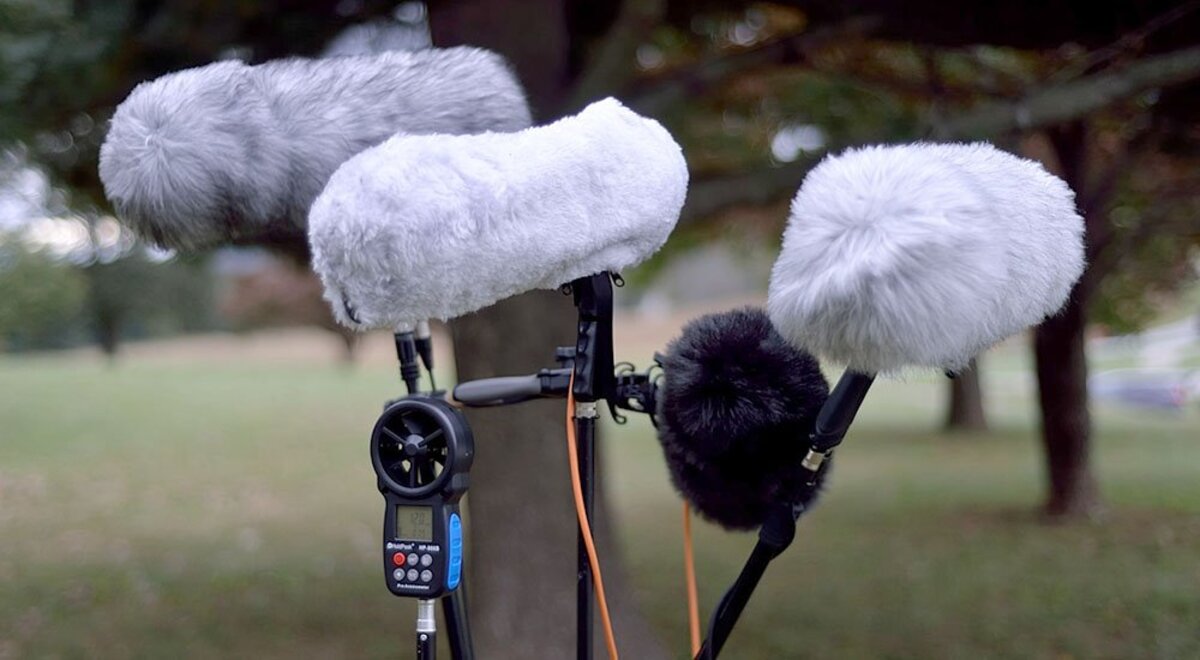Home>Production & Technology>Composer>In Chance Or Aleatory Music, What Does The Composer Do
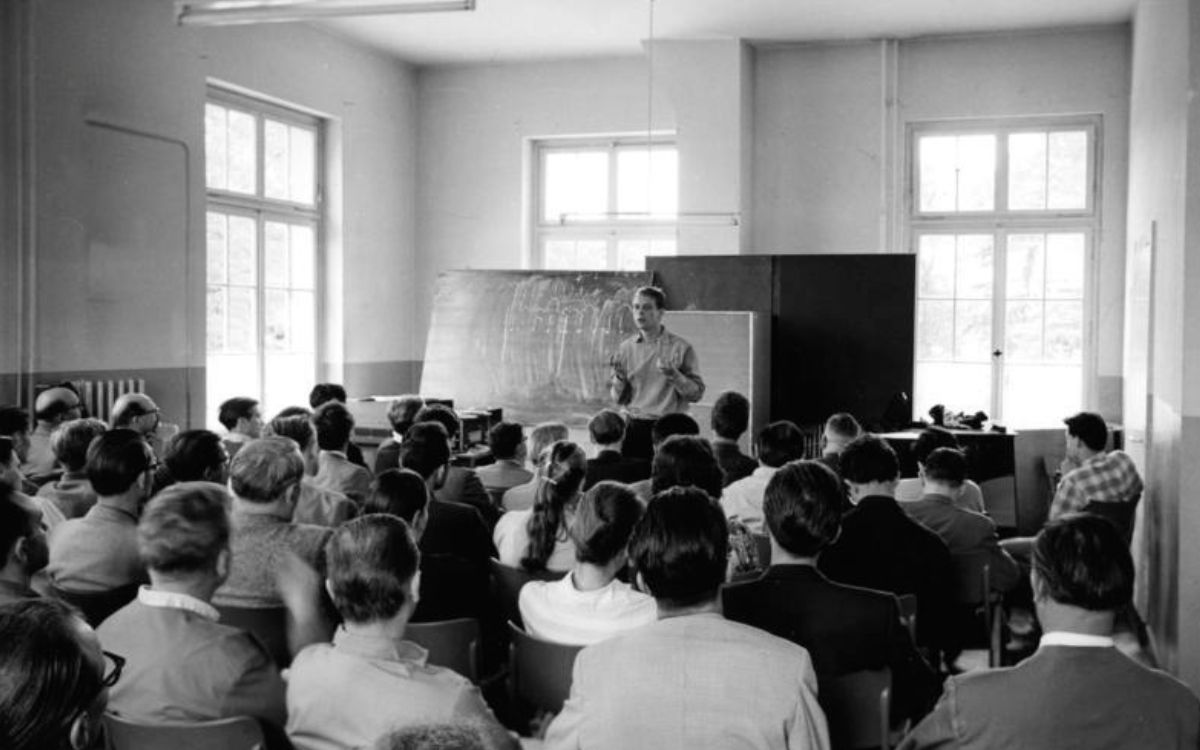

Composer
In Chance Or Aleatory Music, What Does The Composer Do
Published: December 6, 2023
Discover the role of the composer in chance or aleatory music. Unveil the creative process behind this innovative approach to composition.
(Many of the links in this article redirect to a specific reviewed product. Your purchase of these products through affiliate links helps to generate commission for AudioLover.com, at no extra cost. Learn more)
Table of Contents
- Introduction
- Definition of Chance Music
- Definition of Aleatory Music
- Understanding the Role of the Composer
- Historical Context of Chance and Aleatory Music
- The Composer’s Approach to Chance Music
- The Composer’s Approach to Aleatory Music
- Challenges Faced by the Composer in Chance and Aleatory Music
- Impact and Influence of Chance and Aleatory Music
- Conclusion
Introduction
Music has always been a beautiful blend of creativity and structure. Composers play a vital role in shaping the sounds and emotions that resonate with listeners. However, there are times when composers step out of their traditional boundaries and embrace unconventional approaches to composition. This article explores two such approaches: chance music and aleatory music.
Chance music, also known as indeterminate music, is a contemporary composition technique that relinquishes control to random or unpredictable elements. On the other hand, aleatory music, derived from the Latin word “alea” meaning “dice,” involves introducing an element of chance or choice into the performance of a composition.
In both chance and aleatory music, the role of the composer becomes fascinatingly ambiguous. Instead of meticulously crafting every aspect of the composition, the composer relinquishes some level of control, allowing for unforeseen outcomes and spontaneous moments of musical brilliance.
This article will delve deeper into the definitions of chance and aleatory music, explore the historical context surrounding these approaches, and examine the unique challenges faced by composers in the realm of chance and aleatory music. Additionally, we will explore the impact and influence that chance and aleatory music have had on the broader musical landscape.
So, join us on this journey as we unravel the enigmatic role of the composer in chance and aleatory music, and gain a deeper appreciation for the innovative ways these composers adapt their craft to create truly unique musical experiences.
Definition of Chance Music
Chance music, also referred to as indeterminate music or aleatoric music, is a contemporary composition technique that embraces randomness and unpredictability in the creative process. Instead of following a predetermined structure or set of instructions, chance music introduces elements of chance and allows them to influence the final outcome of the composition. This approach challenges the traditional notion of the composer as a meticulous craftsman, opening new possibilities for musical expression.
In chance music, the composer relinquishes control over various aspects of the composition, such as rhythm, melody, and arrangement. Instead, they establish a set of rules or parameters within which the performers or external factors can make spontaneous decisions during the performance. These decisions can range from improvising specific sections to selecting from a pool of pre-composed fragments or even choosing the order or timing of musical events.
The use of chance elements in music can be traced back to the mid-20th century with the emergence of composers like John Cage, Karlheinz Stockhausen, and Pierre Boulez. John Cage, one of the pioneers of chance music, famously employed the use of the I Ching, an ancient Chinese divination system, to determine certain musical elements such as pitch and duration.
Chance music challenges the boundaries of traditional composition techniques by introducing an indeterminate quality. It creates a sense of unpredictability and spontaneity, allowing for unique musical experiences in each performance. The role of the composer in chance music shifts from being a strict creator to more of a facilitator, providing a framework for exploration and collaboration.
It’s important to note that chance music does not completely remove all elements of control from the composer’s hands. Rather, it introduces an element of chance and improvisation within specific boundaries set by the composer. This balance between control and indeterminacy is what makes chance music such an intriguing and ever-evolving genre.
Next, we’ll explore the definition of aleatory music, another composition technique that shares some similarities with chance music but has its own unique characteristics.
Definition of Aleatory Music
Aleatory music, derived from the Latin word “alea” meaning “dice,” is a composition technique that incorporates an element of chance or choice into the performance of a musical piece. Unlike traditional composition, where every note and rhythm is precisely notated, aleatory music allows for a certain degree of improvisation or decision-making by the performers.
In aleatory music, composers create musical frameworks that provide opportunities for performers to make choices or respond spontaneously during the performance. These choices can range from selecting from a set of musical fragments or utilizing improvisational techniques to deciding the order, duration, or dynamics of musical events.
The concept of aleatory music gained popularity in the mid-20th century, with influential figures such as John Cage, Pierre Boulez, and Karlheinz Stockhausen exploring the boundaries of indeterminacy in their compositions. John Cage, in particular, played a significant role in the development of aleatory music with his groundbreaking piece, “Music of Changes,” which mostly relied on chance procedures and consulting the I Ching for musical decisions.
Aleatory music allows for a dynamic and interactive relationship between the composer, performers, and even the audience. It challenges traditional notions of musical authority and promotes collaboration, spontaneity, and creative interpretation. The use of chance elements in aleatory music brings a sense of unpredictability and freshness to each performance, as no two renditions will be exactly the same.
It’s essential to differentiate aleatory music from pure improvisation. While improvisation involves creating music in the moment without predetermined structures, aleatory music gives performers specific guidelines or parameters within which they can make choices. These guidelines provide a framework for exploration, ensuring that the performance remains grounded while still allowing for variations and spontaneous moments of musical expression.
Aleatory music celebrates the element of chance and the individuality of performers, fostering a sense of freedom and creativity. Through this approach, the role of the composer expands beyond being the sole creator of the music to becoming a collaborator with the performers, actively engaging with them in the artistic process.
Now that we have explored the definitions of both chance and aleatory music, let’s delve into the intriguing role of the composer in these unconventional approaches to composition.
Understanding the Role of the Composer
In traditional music composition, the role of the composer is often seen as that of a master craftsman, meticulously crafting every aspect of the musical work. However, in the realms of chance and aleatory music, the role of the composer takes on a different form. Instead of being solely responsible for every detail, the composer becomes a facilitator, collaborator, and catalyst for creativity.
Championing the concepts of chance and unpredictability, the composer in chance and aleatory music provides a framework or set of instructions within which performers or external factors can make spontaneous decisions. The composer establishes the boundaries of the composition, allowing for the element of surprise and the potential for unique musical moments to emerge.
In chance music, the composer’s role shifts to that of a guide, establishing rules and parameters that enable performers to make creative choices. The composer sets the stage for exploration and experimentation, giving performers the freedom to interpret and shape the music within the given framework. The composer’s task is to create a structure that allows for the emergence of new possibilities rather than dictating every aspect of the performance.
Aleatory music takes this collaborative approach even further. Here, the composer invites the performers to actively participate in shaping the musical outcome. By incorporating elements of chance and choice, the composer relinquishes a degree of control and embraces the spontaneity and creative decisions made by the performers during the performance. It becomes a dynamic relationship between composer and performer, with each contributing their artistic vision and interpretation.
The composer’s role in chance and aleatory music also extends to the selection and organization of the chance elements themselves. Whether it’s composing a set of musical fragments to be chosen from or incorporating specific chance methods, the composer plays a crucial role in curating the possibilities and ensuring coherence within the framework.
Furthermore, the composer in chance and aleatory music acts as a facilitator of collaboration, fostering a collective creativity among performers and encouraging them to explore new territories. This approach challenges the hierarchical relationship between composer and performer, encouraging a more egalitarian approach in which all participants contribute to the final artistic product.
Ultimately, the role of the composer in chance and aleatory music is one of setting the stage, establishing the rules, and inspiring creativity. It’s about creating a balance between structure and freedom, allowing for spontaneity, and embracing the unexpected. By doing so, composers in chance and aleatory music continue to redefine the boundaries of composition and invite performers and listeners alike to engage in a truly immersive and collaborative musical experience.
Now that we have explored the role of the composer in chance and aleatory music, let’s delve into the historical context surrounding these innovative approaches to musical composition.
Historical Context of Chance and Aleatory Music
The emergence of chance and aleatory music in the mid-20th century was a response to the changing cultural and artistic landscape of the time. These experimental approaches to composition were born out of a desire to challenge and reshape traditional notions of music, pushing the boundaries of what was considered acceptable and innovative.
One of the key figures in the development of chance and aleatory music is John Cage. His groundbreaking composition, “4’33”,” performed entirely in silence, disrupted conventional expectations of music and forced listeners to confront the ambient sounds of the environment. Cage’s interest in chance operations and indeterminacy led him to explore the use of the I Ching, an ancient Chinese divination system, as a means of making musical decisions.
Alongside Cage, composers such as Karlheinz Stockhausen and Pierre Boulez also played pivotal roles in the development of chance and aleatory music. Stockhausen’s piece “Klavierstück XI” employed a complex system of decisions and musical modules, while Boulez’s “Trope” incorporated a series of options and alternative pathways for performers to choose from.
This era of experimentation marked a shift away from traditional composition techniques, where the composer had complete control over every aspect of the music. Instead, chance and aleatory music sought to introduce an element of unpredictability, randomness, and collaboration into the creative process.
The incorporation of chance and aleatory elements in music mirrored the wider artistic movements of the time, such as Dadaism and Fluxus, which embraced chance, spontaneity, and the breaking of conventional boundaries. The exploration of unconventional approaches to composition allowed composers to challenge established norms, question their own creativity, and invite performers and listeners to actively engage in the artistic process.
The impact of chance and aleatory music extended beyond the realm of composition. These approaches influenced other art forms, including visual arts, theater, and literature, as artists sought to break free from traditional constraints and embrace the unpredictable and the accidental.
Today, chance and aleatory music continue to be relevant and influential. Contemporary composers and performers draw on these techniques, incorporating elements of chance and indeterminacy to create unique and vibrant musical experiences. The acceptance and integration of chance and aleatory elements into the musical landscape have expanded the possibilities of artistic expression, challenging traditional notions of composition and collaboration.
In the next section, we will explore the different approaches taken by composers in chance and aleatory music, delving into their creative processes and the challenges they face in embracing these unconventional methods.
The Composer’s Approach to Chance Music
In chance music, composers embrace a unique and unconventional approach to composition that introduces elements of unpredictability and randomness. The composer’s role in chance music is to provide a framework within which performers or external factors can make spontaneous decisions during the performance, allowing for unexpected musical outcomes.
The approach to chance music starts with the establishment of a set of rules or instructions. These rules may define the parameters within which performers can make choices or determine the methods by which chance elements are introduced into the composition. The composer may assign certain actions or materials to a chance procedure, leaving the specific outcomes open to the performers or external factors.
John Cage, one of the pioneers of chance music, famously used chance operations such as the I Ching or the rolling of dice to make decisions about pitch, rhythm, and other musical elements. This approach allowed for a certain level of detachment from traditional compositional decision-making and introduced an element of surprise and unpredictability into the music.
Composers working with chance music often create a set of possibilities or options from which performers can choose. These options may include musical fragments, notated instructions, or even graphical symbols that represent different musical actions or events. The performers then have the freedom to select from these options and determine the specific order, timing, or interpretation during the performance.
Flexibility is a key aspect of the composer’s approach to chance music. By relinquishing control over certain musical elements, composers allow for a collaborative and co-creative process with the performers. This approach celebrates the role of the performers as active participants in the creative act, bringing their own interpretations and contributions to the final musical result.
Additionally, the composer’s approach to chance music involves carefully considering the balance between chance and structure. While chance elements introduce unpredictability, the overall composition still requires coherence and a sense of purpose. Composers must strike a delicate balance between providing enough artistic freedom for the performers and maintaining a sense of cohesion within the musical piece.
Chance music challenges conventional composition techniques and encourages composers to embrace the unexpected. It allows for a continuous exploration of new possibilities and encourages creativity not only from the composer but also from the performers and even the listeners. This collaborative and dynamic approach to composition makes chance music a captivating and ever-evolving genre.
Now that we have explored the composer’s approach to chance music, let’s move on to understanding the composer’s approach to aleatory music and the unique challenges they face in embracing this innovative approach to composition.
The Composer’s Approach to Aleatory Music
In aleatory music, composers take an innovative and daring approach that incorporates an element of chance or choice into the performance of a musical piece. The composer’s role in aleatory music is to create a framework that allows for creative decision-making by the performers, fostering a collaborative and interactive relationship between composer and performer.
The approach to aleatory music begins with the composer establishing the boundaries within which performers can make choices or improvisational decisions. These boundaries may include specific musical materials, predetermined structures, or guidelines for improvisation. The composer provides a flexible framework that allows performers to actively engage with the music and contribute their own artistic interpretations.
Aleatory music can take various forms. Some composers provide performers with a pool of pre-composed musical fragments, allowing them to select, reorder, or interpret these fragments during the performance. This approach gives performers agency and allows for a unique interpretation of the composition in each rendition.
Other composers may incorporate chance elements during the performance, such as dice rolls or random number generators, to determine specific musical events. This introduces an element of unpredictability, creating a dynamic and spontaneous musical experience for both performers and listeners.
The composer’s approach to aleatory music also involves considering the balance between structure and freedom. While aleatory music promotes creative decision-making by performers, it still requires a coherent overall structure. Composers must strike a delicate balance, providing enough guidance to maintain a sense of purpose while allowing for the freedom and improvisational spirit that aleatory music entails.
Furthermore, the composer’s approach in aleatory music often includes a collaborative mindset. Composers and performers work together, exchanging ideas and exploring different possibilities. This approach challenges the traditional hierarchical relationship between composer and performer, promoting a more egalitarian and interactive artistic process.
Aleatory music unlocks new avenues for musical expression, allowing for spontaneous moments of creativity and unexpected interactions between performers. It encourages performers to bring their individuality and artistic sensibilities to the composition, generating a unique musical experience with each performance.
Composers in aleatory music embrace the notion that music is a living art form, open to interpretation and change. Through their approach, they empower performers to actively contribute to the creation of the music, fostering a sense of ownership and investment in the final artistic product.
Now that we have explored the composer’s approach to aleatory music, let’s move forward to discuss the challenges faced by composers in the realm of chance and aleatory music.
Challenges Faced by the Composer in Chance and Aleatory Music
Composers venturing into the realms of chance and aleatory music face unique challenges that arise from relinquishing some level of control and embracing unpredictable elements in their compositions. These challenges revolve around striking a balance between structure and freedom, ensuring coherence amidst spontaneity, and maintaining a clear vision while embracing the potential for unexpected outcomes.
One of the primary challenges is establishing a framework that provides enough guidance to the performers while still allowing for creative decision-making. Composers must carefully define the boundaries within which performers can make choices or improvise, ensuring that the resulting music remains cohesive and aligned with their artistic intentions.
Another challenge lies in finding the right balance between structure and freedom. Composers must create a structure that provides enough flexibility for the performers to express their creativity, yet maintains enough coherence to convey the intended musical message. Striking this balance requires a deep understanding of musical form, improvisation techniques, and the dynamics of collaborative composition.
Composers in chance and aleatory music must also consider the potential for unintended outcomes. While chance elements inject unpredictability and spontaneity, they can also lead to a loss of control over the final musical result. Composers must navigate this uncertainty and be willing to embrace the unexpected, understanding that it may lead to novel and exciting musical discoveries.
Additionally, composers face the challenge of effectively communicating their intentions to the performers. They must find ways to clearly articulate the rules, guidelines, or chance operations in a manner that can be easily understood and interpreted by the performers. This requires a strong sense of communication and an open dialogue with the performers throughout the creative process.
Furthermore, composers may encounter challenges related to collaboration and the varying interpretations of performers. Aleatory music, in particular, invites performers to contribute their own personal artistic choices and interpretations. Composers must navigate the balance between allowing performers creative freedom while maintaining their artistic vision for the composition.
Lastly, the challenge of finding an audience that appreciates and understands chance and aleatory music should not be overlooked. These unconventional approaches may require audiences to adjust their expectations and embrace the element of surprise. Composers must engage in educational efforts and promote a deeper understanding and appreciation of chance and aleatory music to ensure its continued reception and growth.
Despite these challenges, composers in chance and aleatory music view them as opportunities for creative exploration and innovation. By embracing the inherent uncertainties and striking a delicate balance, composers can create truly unique and captivating musical experiences that challenge the conventions of traditional composition.
Now, let’s explore the impact and influence of chance and aleatory music in the broader musical landscape.
Impact and Influence of Chance and Aleatory Music
Chance and aleatory music have had a profound impact on the musical landscape, challenging traditional composition techniques and expanding the possibilities of artistic expression. These innovative approaches have not only influenced the field of music but have also sparked interdisciplinary collaborations and shaped the broader creative realm.
One significant impact of chance and aleatory music is the redefinition of the composer-performer relationship. These approaches blur the lines between composer and performer, fostering collaborative and interactive relationships. Performers become active participants in the creative process, bringing their own interpretations and choices to the music. This shift encourages ensemble work, improvisation, and a sense of shared ownership, empowering performers to contribute their individual artistry and creativity to the music.
Chance and aleatory music have also challenged the traditional notion of a fixed and unchangeable musical composition. The element of chance introduces variations and unpredictability, resulting in unique performances with each rendition. This concept of music as a living, ever-evolving entity has influenced other art forms such as dance, theater, and visual arts, giving rise to interdisciplinary collaborations and innovative multimedia experiences.
In the realm of composition, chance and aleatory music have inspired a sense of experimentation and exploration. Composers are encouraged to think beyond traditional techniques and to embrace novel ways of creating music. This has resulted in a diversification of musical styles, techniques, and forms, expanding the artistic horizons and pushing the boundaries of what is considered acceptable in the world of composition.
The impact of chance and aleatory music can also be seen in the evolving concert experience. Audiences are now exposed to performances that are dynamic, spontaneous, and unpredictable. This challenges traditional expectations and invites listeners to actively engage with the music, experiencing it as a living, evolving experience rather than a static entity. This new concert experience fosters a deeper connection between the audience, performers, and the music itself.
Furthermore, chance and aleatory music have influenced pedagogy and education in the realm of music. These approaches have encouraged new methods of teaching and learning, emphasizing collaboration, exploration, and creative problem-solving skills. They have pushed educators to incorporate improvisation, ensemble work, and interactive techniques into music curricula, fostering a more holistic and engaged approach to music education.
Overall, chance and aleatory music have had a transformative impact on the musical landscape, challenging traditional norms and expanding the possibilities for artistic expression. They have fostered collaborative relationships, inspired experimentation, and introduced new ways of experiencing and appreciating music. By embracing the element of chance and relinquishing some level of control, composers and performers continue to push the boundaries of creativity, shaping the future of music in exciting and unexpected ways.
Now, let’s conclude our exploration of chance and aleatory music and reflect on the enigmatic role of the composer in these unconventional approaches to composition.
Conclusion
Chance and aleatory music have revolutionized the world of composition, challenging traditional notions of control and structure in music creation. These innovative approaches have redefined the role of the composer, shifting from a meticulous craftsman to a facilitator and collaborator, opening doors to new creative possibilities.
Chance music, with its embrace of randomness and indeterminacy, allows for unforeseen outcomes and spontaneous moments of musical brilliance. Composers in chance music establish a framework within which performers can make creative choices, resulting in unique interpretations with each performance.
Aleatory music, on the other hand, incorporates elements of chance and choice into the performance itself. Composers in aleatory music provide guidelines and structures that foster improvisation and decision-making by the performers, resulting in dynamic and interactive musical experiences.
The challenges faced by composers in chance and aleatory music revolve around finding the balance between structure and freedom, ensuring coherence amidst spontaneity, and effectively communicating their intentions to performers. Overcoming these challenges requires a deep understanding of form, improvisation techniques, and a collaborative mindset.
The impact of chance and aleatory music extends beyond the realm of composition. They have influenced the broader artistic landscape, sparking interdisciplinary collaborations and redefining the relationships between composer, performer, and audience. These approaches have fostered a sense of ownership, collaboration, and active engagement in the creative process.
Chance and aleatory music have inspired experimentation, expanded musical styles, and influenced pedagogy and education. These approaches have challenged traditional norms, pushing the boundaries of artistic expression and introducing new perspectives on the ever-evolving world of music.
In conclusion, chance and aleatory music invite us to question our notions of control and structure in music. They encourage collaboration, spontaneity, and creative exploration. The enigmatic role of the composer in chance and aleatory music embraces the unpredictable and celebrates the power of collaboration, resulting in unique and mesmerizing musical experiences that continue to shape the future of music.


